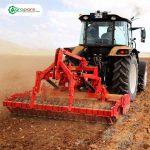Differences Between Cubic and Cylindrical Balers
When it comes to baling forage and other agricultural materials, choosing the right baler is crucial for efficient storage, transportation, and use. Two of the most common types are cubic balers and cylindrical balers. But what are the key differences between these two balers, and how do you determine which one is right for you? In this article, we will explore these questions to help you make the best choice for your needs.
Who Uses These Balers?
Both cubic and cylindrical balers are ideal for various agricultural sectors, including:
- Farmers with large or small-scale forage production.
- Fodder export companies and commercial farms with mechanized systems.
- Livestock farms, storage centers, and warehouses for animal feed.
If you’re in the business of forage production or fodder storage, understanding these balers is essential for optimizing your operations.
Cubic Baler
Packaging Shape and Order
Cubic balers produce perfectly regular geometric shapes for bales, offering precise and uniform packaging.
Advantages of Cubic Bales
- Easy Stacking: Cube-shaped bales stack like bricks in a building, making them easier to organize and store in a compact manner. This helps save space and improves warehouse efficiency.
- Higher Storage Capacity: The orderliness of cubic bales makes them ideal for storage and transportation. They take up less space and can be stacked in an organized manner, maximizing storage capacity.
- Export Use: The standard shape and neat arrangement make cubic bales perfect for fodder export. International buyers prefer them due to their high quality and easy handling during transportation.
Disadvantages
- Higher Energy Consumption: Cubic balers consume more energy compared to cylindrical balers due to their more complex mechanism.
- Initial Investment: The cost of cubic balers is generally higher, which may be a consideration for some buyers.
Cylindrical Baler
Packaging Shape and Special Features
Cylindrical balers produce round bales. The round shape, while effective, does not offer the same neat and organized stacking capability as cubic bales.
Advantages of Cylindrical Bales
- Lower Energy Consumption: Cylindrical balers are generally more energy-efficient, which is an important factor for smaller operations.
- Quick Storage: Cylindrical bales are suitable for quick storage in the field or barn, making them ideal for local use and quick consumption of fodder.
- Practical for Small Farms: These bales are more practical for small-scale operations and farms without the need for high-level storage or export considerations.
Disadvantages
- Waste of Space: Due to their round shape, cylindrical bales leave gaps when stacked, resulting in inefficient use of storage space.
- Difficult Transportation: The round shape may cause bales to roll during transportation, requiring additional restraints and making them more challenging to handle.
Comparing Cubic and Cylindrical Balers
| Feature | Cubic Baler | Cylindrical Baler |
|---|---|---|
| Packaging Order | Very orderly | Less orderly |
| Warehouse Arrangement | Space-efficient and compact | Takes up more space |
| Transportation | Easier and more stable | More likely to roll |
| Use in Export | Ideal for export | Less marketable |
| Empty Space Between Packages | Minimal | Significant |
| Energy Consumption | Higher | Lower |
| Initial Cost | High | Lower |
Conclusion: Which Baler is Right for You?
Cubic Baler: Best for Large-Scale Operations
- Best for large farmers with high-volume forage production and the need for organized, space-efficient storage.
- Ideal for export due to its neat packaging and higher storage capacity.
- Perfect for industrial farms, livestock feed storage centers, and farms with mechanized systems.
Cylindrical Baler: Best for Local and Small-Scale Use
- Best for small-scale farmers or local operations where precise stacking and export are not a concern.
- Suitable for quick storage in local farms or rural areas with limited storage facilities.
- More practical for temperate climates where bales can be stored outdoors without the need for extensive warehouse space.





